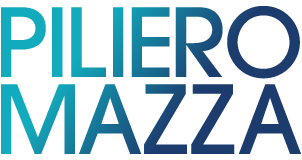The U.S. Small Business Administration’s (SBA) Historically Underutilized Business Zone (HUBZone) program underwent a major rule change in January 2025, as we wrote about here. In this blog, PilieroMazza examines new developments that clarify our understanding of the HUBZone rules and how the HUBZone Program is positioned to help the Trump Administration meet its objective to grow domestic small business manufacturing.
SBA’s Made in America Manufacturing Initiative
At a recent event, an SBA official explained that one of the agency’s key initiatives is to expand small business manufacturing in the U.S. through SBA’s new “Made in America Manufacturing Initiative,” announced in March 2025. SBA is seeking to “restore American economic dominance and national security by empowering small manufacturers” and is focused on a deeper collaboration with federal agency resources to increase access to capital, improve opportunities for investment in support of manufacturing in America, and help small businesses export their products on a global scale. The positive news for HUBZone firms is that SBA views the HUBZone Program as a potential tool to help it meet the objectives of its Made in America Manufacturing Initiative. This makes sense because the HUBZone Program has strong roots in U.S. manufacturing. We understand SBA is considering adjustments to the HUBZone Program requirements to strengthen its ability to meet the Made in America Manufacturing Initiative. As strong advocates for the HUBZone Program, we welcome those considerations.
PilieroMazza also applauds SBA for its recent and proactive steps to adjust the January 2025 rule changes to clear up potential points of confusion or unintended consequences. On June 4, 2025, SBA issued a corrective amendment that revised several aspects of the new HUBZone rules. In our view, the most significant amendment was a change to the legacy HUBZone employee rule. Prior to the amendment, there was confusion about whether HUBZone firms would need to wait until their next three-year recertification in 2027 to qualify new legacy HUBZone employees. This would have harmed HUBZone firms that planned to qualify new legacy HUBZone employees in 2025 before SBA changed from requiring recertification each year to requiring recertification every three years. Fortunately, SBA’s June 4th amendment confirmed that HUBZone firms do not need to wait for their three-year recertification date to qualify legacy HUBZone employees and can do so in any year based on their certification anniversary date.
HUBZone Eligibility
A few years ago, we wrote here about the new jurisdiction for SBA’s Office of Hearings and Appeals (OHA) to decide appeals from HUBZone status protests. Recently, OHA issued its first substantive decision in a HUBZone case, BahFed Corp., SBA No. HUB-104 (Apr. 4, 2025) (BahFed). BahFed dealt with whether employees of an affiliate are considered in determining whether a HUBZone firm is in compliance with the 35% and principal office requirements for the HUBZone Program. The HUBZone rules permit HUBZone firms to have affiliates, and just because a firm has an affiliate does not automatically mean that the affiliate’s employees are added together with the HUBZone firm’s employees to determine its HUBZone eligibility. To determine whether to include the employees of an affiliate in the assessment of HUBZone eligibility, SBA looks at whether there is a “clear line of fracture” between the HUBZone firm and its affiliate(s).
In BahFed, OHA interpreted the relevant regulation at 13 C.F.R. § 126.204(c)(1) and found there was a clear line of fracture between the HUBZone firm and its 17 affiliates. The record showed that the HUBZone firm and its affiliates did not share employees, facilities, or equipment, and they did not have the same customers or lines of business. The record also showed that there was no financial assistance between the HUBZone firm and its affiliates. The appellant argued that there was a lack of clear fracture because the HUBZone firm and its 17 affiliates had common ownership through an individual (who, in turn, owned 100% of the HUBZone firm’s holding company), and the HUBZone firm paid a management fee to the holding company. OHA found that these circumstances were insufficient to show a lack of clear fracture, so the HUBZone firm did not need to include the employees of its affiliates when determining HUBZone eligibility.
BahFed also involved a two-step procurement in which proposals were submitted in two phases. Interpreting 13 C.F.R. § 126.601(e), OHA found that HUBZone eligibility is determined on the date of the initial offer, even though pricing was not submitted until the second phase of the procurement. This is different than the general rule for size purposes that measures size as of the date of the initial proposal submission that includes pricing.
PilieroMazza will continue to monitor developments with the HUBZone rules and case law and is optimistic about the role the HUBZone Program will play in meeting SBA’s Made in America Manufacturing Initiative. If you are a HUBZone firm or are thinking about applying to the HUBZone Program and would like to discuss this blog or other HUBZone-related issues, please contact the authors, Jon Williams (jwilliams@pilieromazza.com) or Daniel Figuenick (dfiguenick@pilieromazza.com).
________________
If you’re seeking practical insights to gain a competitive edge by understanding the government’s compliance requirements, tune into PilieroMazza’s podcasts: GovCon Live!, Clocking in with PilieroMazza, and Ex Rel. Radio.



